Estimated reading time: 12 minutes
I’m hardly a prophet in the same league as Elijah, Jeremiah, or Nostradamus, but I would like to hazard a prediction. I’m 58 years old. I would opine that, before the terminus of my natural life, we will all see a video of a mushroom cloud some poor schmuck shot on his cell phone plastered across Fox News. Considering the unvarnished lunatics with whom we share the planet, I just think this it is inevitable. On one of the most dangerous days in human history, the steadfast Vasili Arkhipov defused an imminent nuclear showdown during the Cuban Missile Crisis. Arkhipov postponed that mushroom cloud for another day.
Table of contents
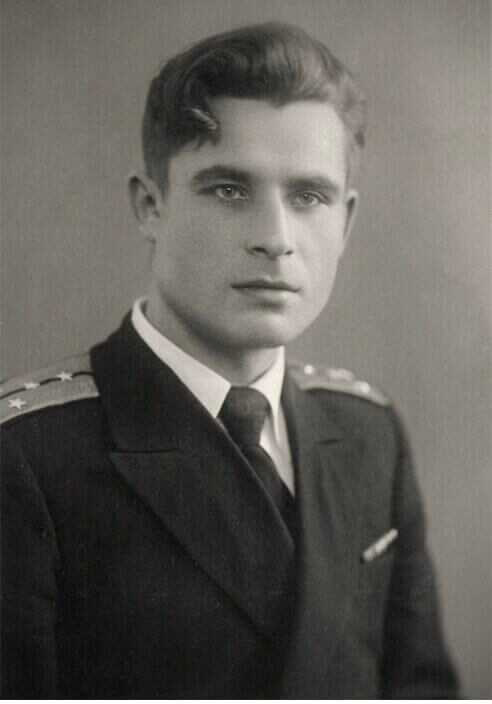
Let’s Not Forget Our Nuclear Past
It’s just been too long. I think the world has, tragically, forgotten how horrible nuclear weapons are. Quite soon there will be no one left alive who was an adult in August of 1945 when last we touched one of these bad boys off for real. With distance comes a certain inevitable blissful ignorance. Combine that with the current sordid state of nuclear proliferation and you have the recipe for disaster.

Vladimir Putin has turned out to be positively Hitlerian. The Internet claims that the Iranians are two weeks away from the bomb. Their challenge is finding a way to get the thing to Israel. Every time they get frisky and start lobbing missiles, the Israelis shoot them all down and make the Iranian mullahs look like impotent rubes. Of course, that could all change with a headline.
And then there’s whatever Kim Jong Un is. That guy wouldn’t know reality if it fell out of space and struck him on the head. Google claims the North Koreans have around fifty operational warheads with the capacity to build a further half dozen per year. I’d honestly sooner they be left in the care of a typical hyperactive third-grader than that nutjob.
As unsettling as all that is, there was a time when things were markedly scarier. On 27 October 1962, the entire world tried desperately to immolate itself. The actions of a single man, the second-in-command of Soviet submarine B-59, stayed the Devil’s hand. Every last one of us owes our way of life to that young stud.
Where Vasili Was That Day
The Cuban Missile Crisis has been exhaustively documented by much more adroit wordsmiths than I. Today the Russians call it the Caribbean Crisis. No matter what title you give it, however, it is shocking to appreciate with the benefit of hindsight how close the world actually came to dying.
The Soviet plan was audacious. Had they pulled it off, they would have irrevocably shifted the balance of power. They christened it Operation Anadyr. Anadyr is the name of a Russian town, the capital of Chukot Autonomous Okrug.
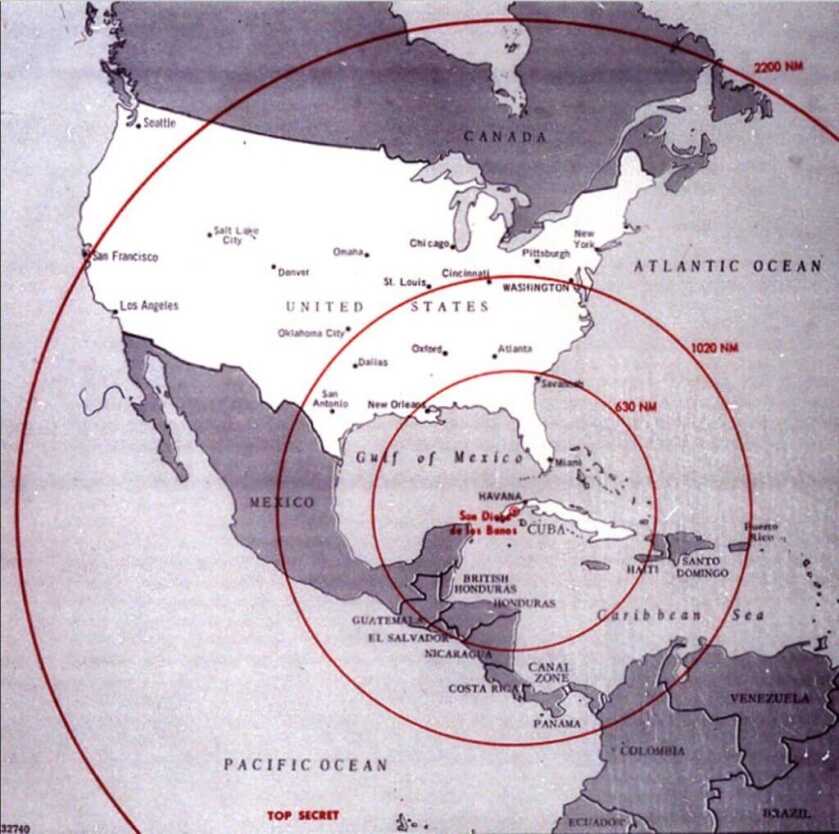
Operation Anadyr involved the covert installation of some 100 tactical nuclear weapons, a further 60 intermediate-range ballistic missiles, and nearly 40,000 combat troops onto the island of Cuba. They also planned to establish a thriving Soviet submarine base at Mariel Bay. They nearly pulled it off.
Cuba is a mere 90 miles from the US at its closest point. The tactical nukes were to be used to defend the island in the event of an amphibious assault. The ballistic missiles were all topped with megaton-range thermonuclear warheads. These were city killers that could have been deposited onto American population centers with minimal warning. The soldiers were there for Lord-knows-what. I wouldn’t put it past them to have been considering landing those guys in Miami.
Forget for a moment that touching off 100 tactical nukes in the defense of Cuba would have rendered Cuba pretty not awesome. This plan would have also placed all of North America in a nuclear stranglehold. JFK was having none of that.
Available on GunsAmerica Now
The Best-Laid Plans
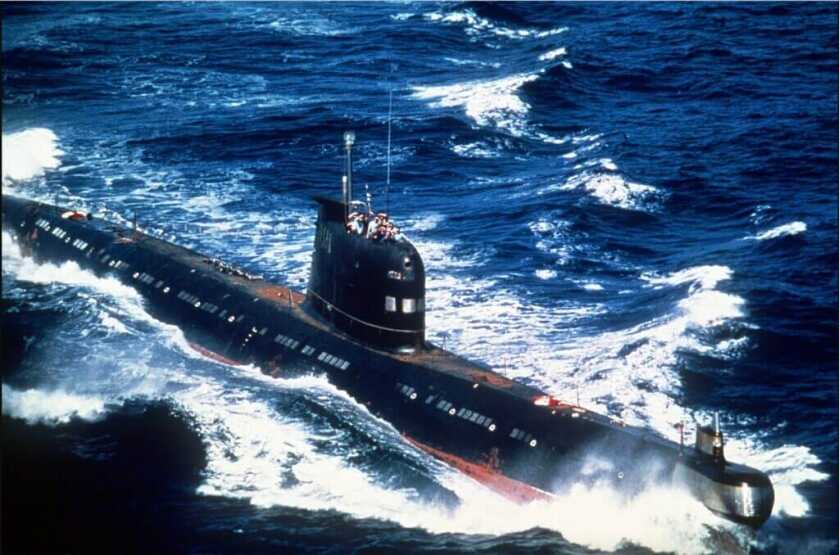
A small part of Operation Anadyr entailed the deployment of four diesel-electric Foxtrot-class submarines of the 69th Submarine Torpedo Brigade from Sayda Bay destined for Cuba. Each of these boats was equipped with 21 conventional war shot torpedoes along with a single T-5 fish topped with a 10-kiloton nuclear warhead. In the event of an actual shooting war, the Soviet sub-commanders were trained to lead with the nuke. These monsters were the sort that would gobble up an entire carrier battle group in a huge bubble of nuclear fire.
Not much went according to plan. The Brigade commander suffered some sort of medical event and had to be replaced right before the four boats sortied. Regardless, on the morning of 1 October, the subs–B-59, B-36, B-130, and B-4—all chugged out into the North Sea at half-hour intervals. The entirety of NATO’s antisubmarine force was anxiously awaiting them.
Things Get Real For Vasili
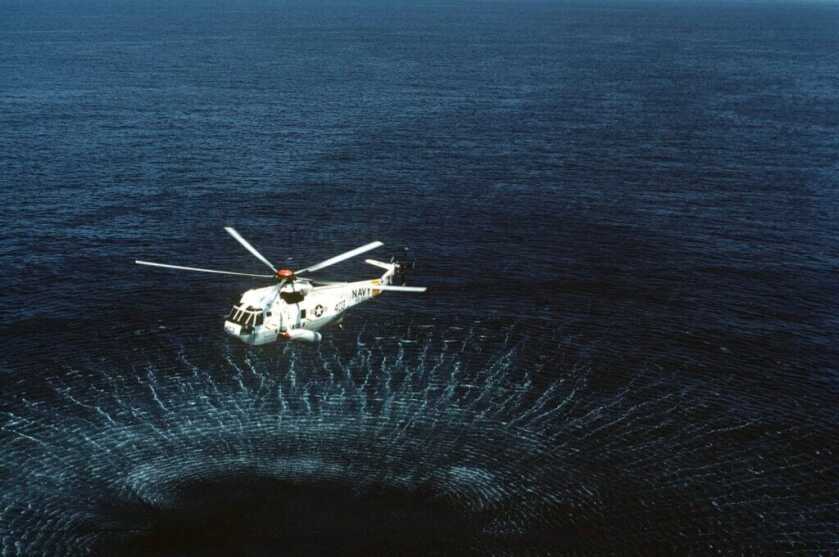
The West had invested tremendous time and treasure in antisubmarine operations. The SOSUS (Sound Surveillance System) on the seabed heard the stealthy boats creeping by. In response, NATO forces deployed sonar-dipping helicopters, dedicated anti-submarine aircraft, covert intelligence vessels, and gobs of conventional surface warships. The only way for these Russian subs to advance undetected was to either remain submerged or surface during rough weather. Given the submarine technology of the day, neither option was terribly appealing.
The Russian skippers’ orders were intentionally scant. The whole world was on the brink of nuclear annihilation, and they were given a fair amount of latitude in how they executed their mission. However, that relative paucity of information fomented a certain paranoia.
Eventually, they lost comms with their higher command altogether. To make things worse, Hurricane Ella had set up shop between New York and Bermuda. The resulting battering left several crewmembers with broken ribs, scattered the pursuing warships, and significantly damaged three of the four Russian subs. It also left all the crews in a bit of an agitated state. Only B-59 came through the other side relatively unscathed.
The Cold War Gets Hot

These submarines were designed for quiet operation in arctic areas. Once B-59 got down around Cuban latitudes, they were sweltering. Interior temperatures ranged between 113 to 149 degrees, and the refrigerators failed. More importantly, the desalination equipment burned out, so each crew member was held to a cup of fresh water per day. In such a ghastly environment, this was simply inadequate.
Protracted heat exposure, chronic dehydration, and the stress of being pursued by dozens of potentially hostile warships eventually took their toll. Fully five aircraft carriers and their support ships ran hither and yon looking for the squirter submarine. Then on 22 October 1962, the crew of B-59 heard President Kennedy’s defiant speech broadcast in the clear over the radio. English speakers onboard the boat translated the bellicose words. B-59’s skipper felt that war was mere moments away.
Order of Battle
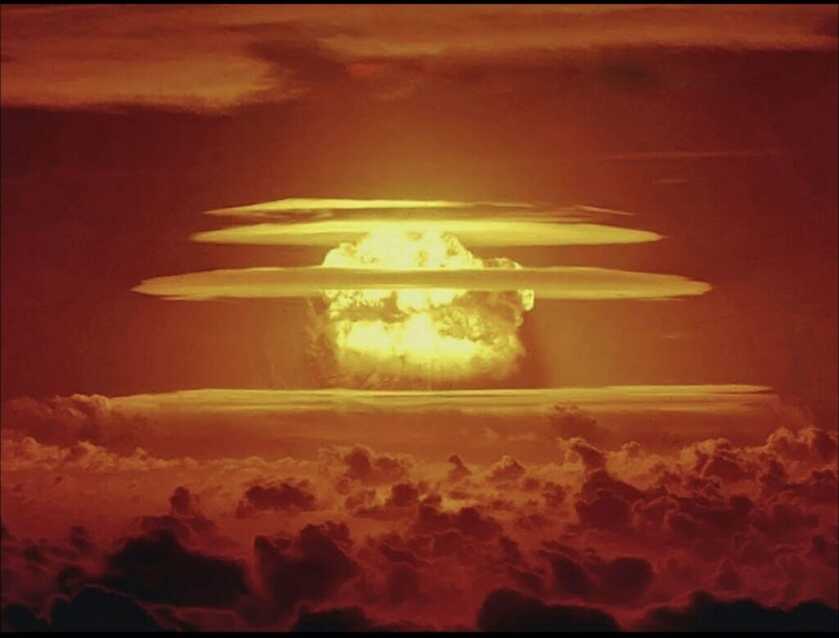
The aft hatch on B-4 was damaged in the storm so she could not submerge for long periods. B-36 was leaking as well. Three of the big diesels powering B-130 had sustained damage in the chaos of the hurricane. B-59’s sundry mechanical failures had left it operational but insufferably hot. On 27 October, an antisubmarine airplane got a fix on B-59 and called in the cavalry. Mankind nearly packed it in on this day.
Both sides bluffed the other. On that one day, we conducted two simultaneous nuclear tests, one in Nevada and the other on Johnston Atoll in the Pacific. The Soviets countered with a 262-kiloton aerial bomb delivered over their arctic test site. We readied some 3,000 operational nuclear devices for deployment against Soviet military and civilian targets. The CIA reported five ballistic missile sites operational on the island of Cuba. Then, Russian missile crews pulverized a U-2 spy plane flying at 70,000 feet over Cuban airspace, killing the pilot. Things were as bad as they could get short of all-out war.
Over the Edge
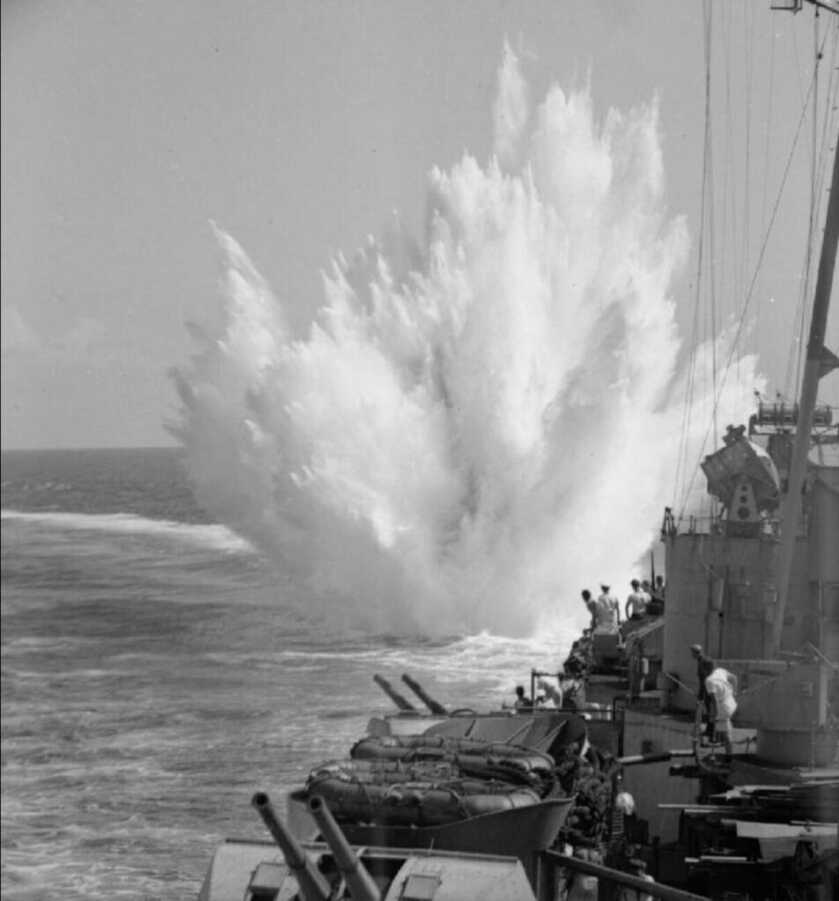
With all of this as a backdrop, the pursuing US vessels began dropping sounding charges in the water to help locate the Russian sub and force it to the surface. From a distance, these seemed like depth charges. Unable to come up for air without exposing themselves to the pursuing destroyers, the crew of B-59 baked. With only one hour’s worth of battery power remaining, a decision had to be made. In his diminished state and with hostile warships all over the place, the Russian skipper of B-59, Captain Valentin Savitsky, decided to light off his nuke.
Savitsky was later quoted as having said, “The war has already started up there, and we are down here doing somersaults. We’re going to blast them now. We’ll die, but we will sink them all. We won’t disgrace our Navy or shame the fleet.”
Vasili Taps the Brakes
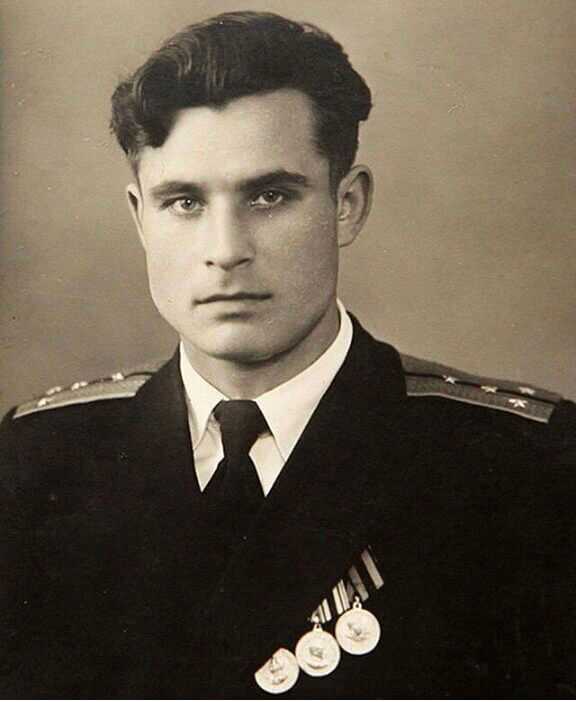
Savitsky’s second-in-command, Captain Second Rank Vasili Arkhipov, suspected something was amiss. He figured that, were the two superpowers actually at war, they would already be dead. Deploying the nuclear device required the unanimous consent of the Captain, the political officer, Ivan Semyonovich Maslennikov, and the XO, Vasili Arkhipov. Arkhipov adamantly refused. Just like a scene from a movie, he convinced his Captain to fire a single sonar ping before they ended the world.
A lot rode on this. An active sonar ping would invariably betray their location. It would also, however, communicate that they were not necessarily trying all that hard to hide.
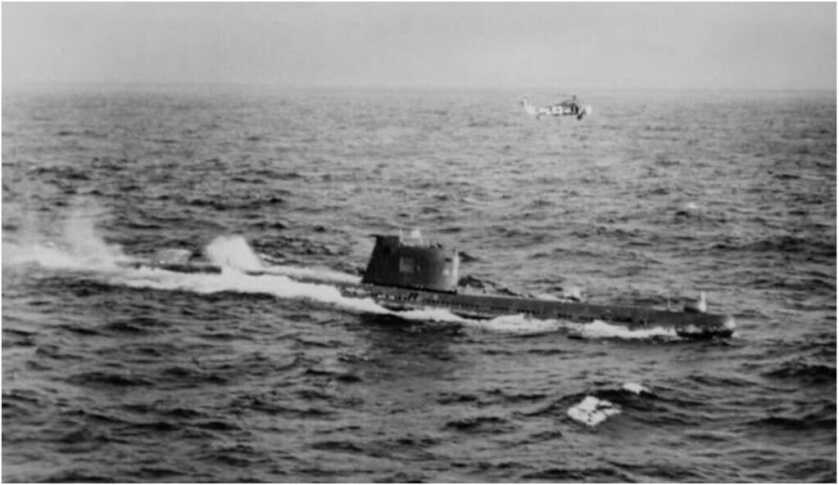
The skippers of the three pursuing destroyers read the simple signal for what it was and ceased their pursuit. B-59 surfaced amidst a dazzling array of flares, white phosphorus incendiaries, and loud jazz music blaring from one ship’s speakers. One of the ASW airplanes loosed a burst of machinegun fire in the water alongside the surfaced boat. Captain Savitsky flashed, “This ship belongs to the Union of Soviet Socialist Republics. Halt your provocative actions.” The pursuing American sub-hunters responded with an apology and backed off.
Fallout for Vasili

Vasili Arkhipov had been onboard the nuclear-powered submarine K-19 the previous year when she had a reactor leak on her maiden voyage that irradiated the entire crew. The engineering watch took the highest dose and all died within thirty days. A further fifteen crew members perished over the next two years. The crew later nicknamed the boat, “Hiroshima.”
READ MORE: M1C Garand Sniper Rifle & Marine MGySgt John Boitnott
Had Captain Second Rank Vasili Arkhipov not survived the K-19 accident and subsequently remained steadfast in his convictions, B-59’s nuclear torpedo would have consumed the pursuing battle group and inevitably conflagrated World War 3. Once B-59 limped back to port, Captain Savitsky disappeared never to be heard from again. Captain Second Rank Vasili Arkhipov simply continued his career. His family later reported that he never spoke of his experience that fateful day in the Sargasso Sea.
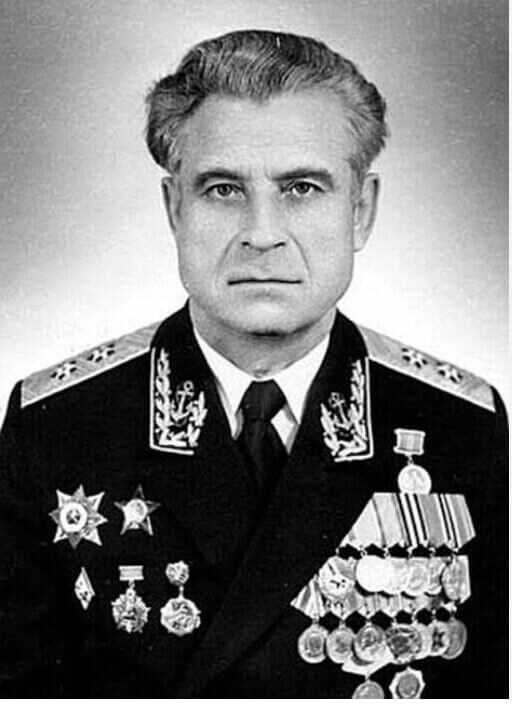
Arkhipov continued in the Soviet submarine service, eventually rising to the rank of Vice Admiral in 1981. He retired from the Soviet Navy in 1988, settling with his wife Olga in Kupavna outside Moscow. Ten years later he succumbed to kidney cancer, likely stemming from the massive dose of radiation he received during the K-19 incident. Vasili Arkhipov died at age 72 indeed having singlehandedly saved the entire world.
*** Buy and Sell on GunsAmerica! ***












I was at Malmstrom AFB in Montana at the time. As a young airman, I was on site at a Minuteman missile silo to assist two officers at an underground launch control facility some distance away. My actions, along with theirs, would have effected a launch had such an order been received. ‘There but for the grace of God.’
Thanks, Will. I had never heard these details until you brought them to light here. Happy Deer Season!
He was not the only ethical Russkie to save the world. Look up Lt Col Stanislav Petrov, whose correct interpretation of missile warning indications as spurious, prevented a full Soviet retaliatory launch in 1983.
All indicators that, at least until now, God is not done with us.
You are quite right!!! NATO Exercise ABLE ARCHER almost triggered this Soviet response, based on some sort of sensor failure they experienced amidst listening to our nuclear exercise commo traffic. I was an unsuspecting US Army lieutenant at a nuclear Ordnance unit in W. Germany, playing my assigned role in submitting whatever exercise communications were required. From my limited perspective, it was merely a communications exercise that demanded relatively little of me or my unit. Little did I know…!!!
I was at HQ SAC, involved in nuclear war planning, having just finished 5 years as an Minuteman ICBM missile crew member at Whiteman AFB, MO. I understand it was sunlight reflections off clouds that gave false ICBM-launch heat bloom indications to Soviet IR satellites, so shaky was their indications and warning interpretive software. Petrov seems to have been aware of the systems limitations and used his intuition to discern the unlikelihood of a bolt-from-the-blue US nuclear attack. His earthly reward was a quiet reprimand for not following procedures and retirement at his then-current grade of Lt Col.
One of my vivid memories was the ongoing Soviet-compromised “nuclear freeze movement” which sought to end US nuclear modernization and lock us into military inferiority. Thank God for the trinity of Reagan, Thatcher and Pope St John Paul II that ended the Cold War.
Excellent article that shed some light on a often overlooked event.
I wonder why we are only now hearing about this. I was a young kid then but remember all the drills in school. What would have cowering under a desk have done.
Just FYI Dr. Dabbs , considering your interest in all MG’s, you should chk out ‘The Big Sandy Shoot’ in northern AZ in Oct and Mar. Two weeks ago there was about 300 mgs, a tank and APC, all shooting. There was even a AA double duece, ala Pearl Harbor movie, think Cuba Gooding.
Our desks would’ve done no good in any nearby nuclear strike, of course, but would’ve provided useful protection against flying debris had nukes burst far enough away to spare us even greater blast and flash effects. Not the kind of distinction anyone finds particularly comforting, I realize, especially kids and their lady schoolteacher.
Don’t feel deceived or neglected, though! In the US Army (c. 1980s), we were trained to react to a blinding white flash by dropping to the ground, face down, feet towards the flash. In GI shorthand, this was dubbed “turning ass to the blast,” lol. Even a pupil’s desk offered better protection than that!
Amazing. 50+ years after and most people are just now told of this incident, thanks to Mr. Dabbs.
A truly wonderful telling of one heroic man, indeed. Thank you, Doc. Dabbs, for bringing this to our attention!…
Great Column. I lived through it but didn’t know the facts. Thanks again for another great story.
Hi Will,
I read your article which triggered some old memories of mine. You gave quite a detailed description of the Russian subs, yet only passing mention of 3 American Destroyers that were in pursuit.
I was a CS3 stationed aboard the USS Dupont DD941 during the Cuban Missile Crisis. I remember being in pursuit of a Russian Sub that broke into a Carrier formation that we were plane guarding for.
It was some very interesting times to say the least. I’m curious which Tin Cans were involved in the pursuit of the Russian Sub that you referenced in your article.
Very impressive, detailed article, I enjoyed it.
Thank you,
David Lesnick
“a set of serious stones”…anatomy humor never gets old! 🤣